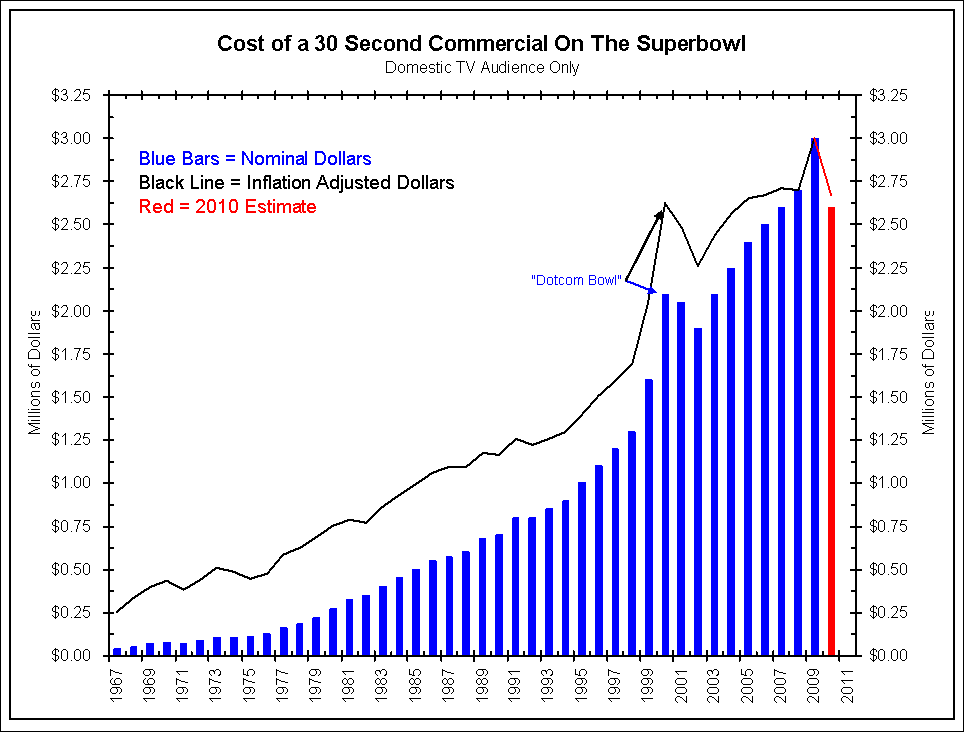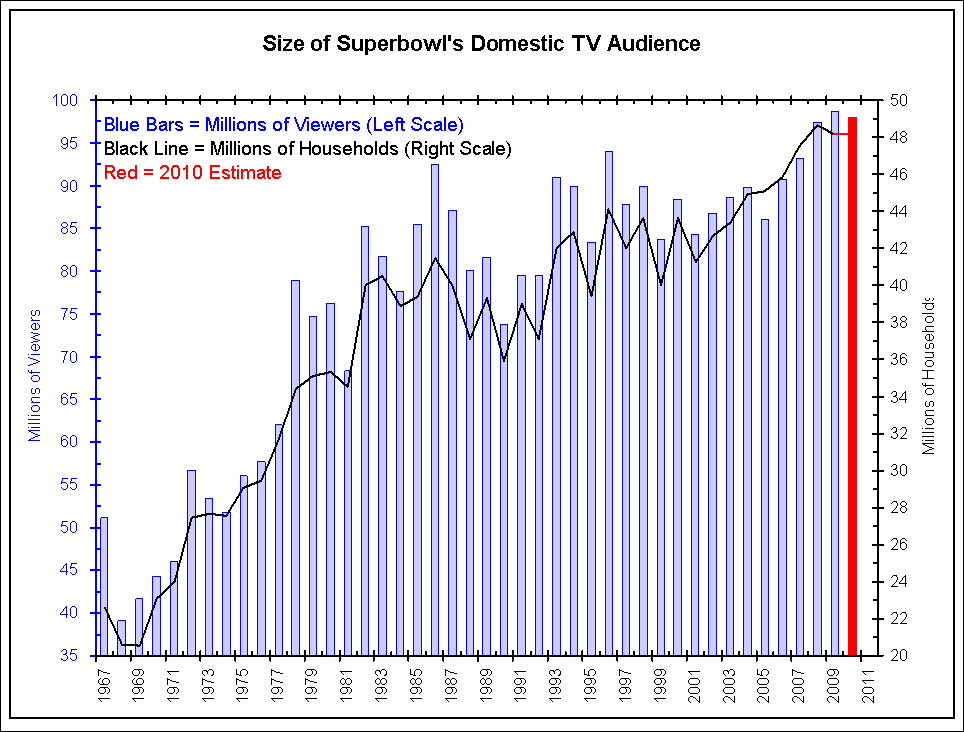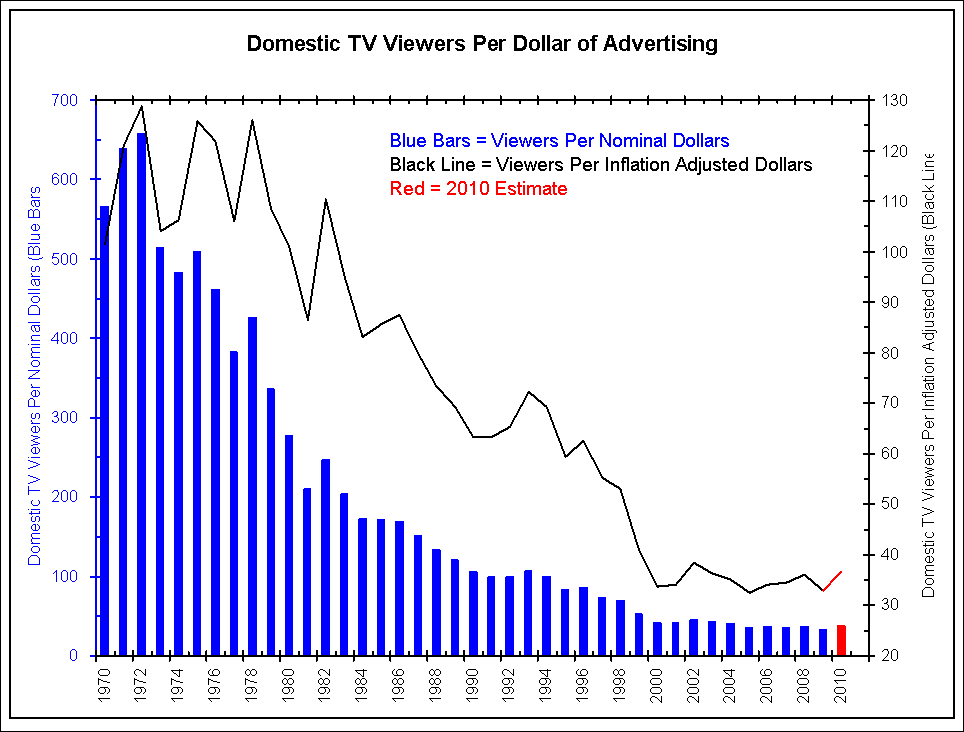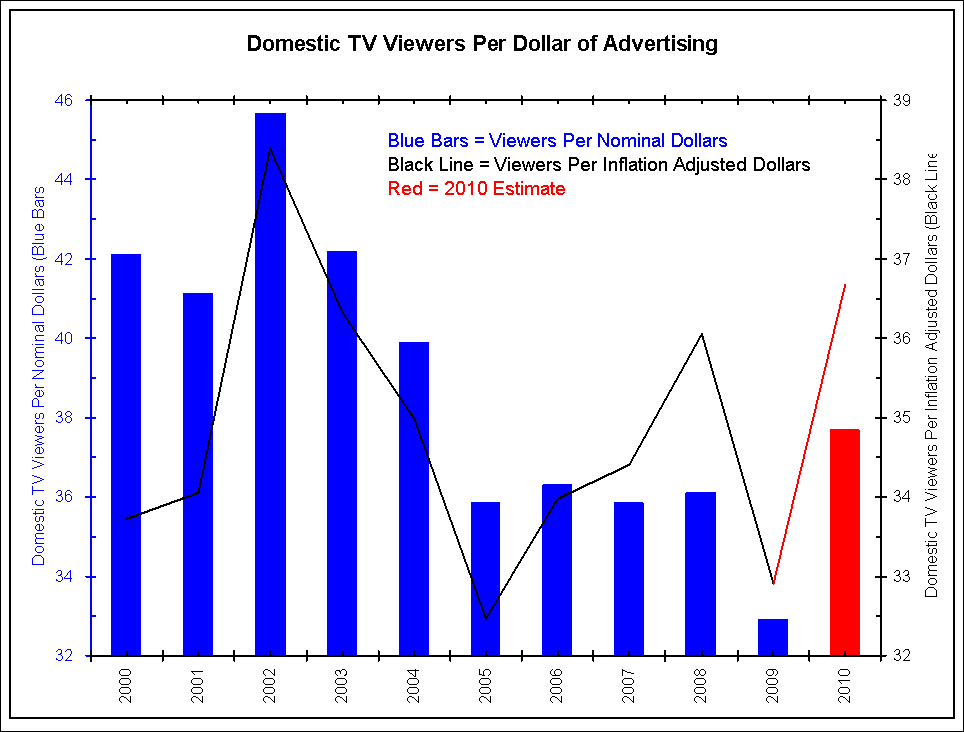The Superbowl As An Economic Indicator
America’s unofficial holiday is this weekend, the Superbowl. What can this event tell us about the economy?
The first chart below shows the cost of a 30-second commercial (domestic audience only). The blue bars show the actual cost, while the black like shows the cost on an inflation-adjusted basis. In red are the 2010 estimates based on various news reports.
A 30-second commercial this Sunday should cost around $2.6 million, down from $3 million last year. This 13% decline is only the third decline ever and the largest year-to-year decline on record. At $2.6 million, the cost of a commercial is the same as it was in 2000. Interestingly, the Dow Jones Industrial Average is also near its 2000 levels, as is total employment in the United States. America’s Lost Decade takes many forms.
The only other Superbowls that saw lower advertising rates were in 2001 (-2.38%) and 2002 (-7.38%). These declines were in the aftermath of the 2000 “dotcom” bubble which saw advertising rates increase by over 50% just two years earlier as floods of internet companies bought commerical spots. Who could forget the pets.com sock puppet that year? The company was in bankruptcy for the 2001 Superbowl.
Charts after the jump . . .
<Click on chart for larger image>
While the advertising rates shown above are interesting in their own right, the size of the audience must also be considered. The next chart shows the number of viewers as blue bars (in millions), the number of households as the black line and the 2010 estimate in red. For 2010, the Superbowl’s domestic audience is expected to down-tick slightly from last year to 98 million viewers spread among 48.15 million households.
<Click on chart for larger image>
Combining the two series together, we get the next two charts. Both show exactly the same thing, differing only by time frame as the second chart below only shows the last 10 years.
These charts divide the size of the domestic TV audience by the cost of a 30-second commercial. The blue bars show the number of views per nominal dollar and the black line shows the number of viewers per inflation-adjusted dollar. The red shows the 2010 estimate.
<Click on chart for larger image>
<Click on chart for larger image>
In the late 1960s and early 1970s, Superbowl advertising was a real deal. Each dollar was paying for hundreds of prospective viewers. By the late 1980s each dollar of adverting was still paying for about 100 prospective viewers. As the second chart shows, in the last 10 years each dollar of advertising was paying for less than 50 viewers, bottoming at 33 viewers per advertising dollar for last year’s (2009) Superbowl.
These charts suggest that Superbowl advertising is no longer a growth industry, at least domestically. The audience size seems to have peaked near 100 million viewers (about one-third of the country, nearly one-half if only adults are considered). Therefore, we believe Superbowl advertising now moves up and down with the economy, unlike the 1970s when Superbowl advertising was a growth industry and increased dramatically each year even if the economy was struggling like 1974/1975 and 1979 to 1981.
As the last chart above shows, advertisers are estimated to be getting the best deal in years. They are expecting 38 viewers per advertising dollar at this year’s Superbowl. Such a deal means advertisers are not as willing to bid for ad time this year relative to previous years. We believe this shows that advertisers are still concerned about the economy and do not want to pay to advertise to consumers that cannot buy, or have elected to bypass, their products. With a 10% unemployment rate nearly 10 million unemployed are going to be watch the Superbowl.
This year’s Superbowl advertising, consistent with other measures of the economy, shows an economy still struggling to recover from the financial crisis.






What's been said:
Discussions found on the web: